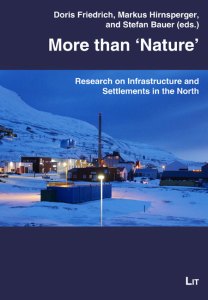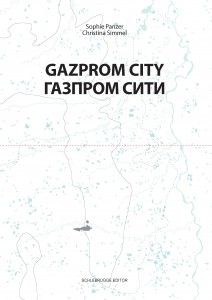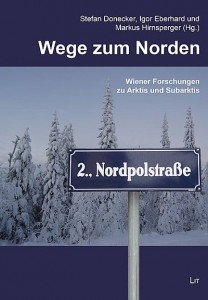More than ‘Nature’
Research on Infrastructure and Settlements in the North
edited by Doris Friedrich, Markus Hirnsperger, and Stefan Bauer
Series: Beiträge zum zirkumpolaren
Norden — Contributions to Circumpolar
Studies, Band 3 — volume 3
Vienna: Lit-Verlag, 2022
x, 332 p.: ill., maps, includes bibliographical references, Paperback,
ISBN 978-3-643-91218-3,
Ebook: 29,90 EUR / paperback: 34,90 Eur
The Arctic is often associated with pristine wilderness, natural resources, and climate change. Yet settlements and infrastructure, which have received less attention, play a significant role in Arctic environments. Extractive industries, military activities, and scientific undertakings have driven the expansion of infrastructures.
This book presents current research on Northern towns and Arctic and Subarctic infrastructure. It examines historical developments, the shaping of environments, sustainability, future planning, and associated living conditions, mainly from a social science perspective.
Doris Friedrich is a Senior Fellow at the Arctic Institute and a PhD student at the University of Vienna, focusing on Arctic human-environment relations.
Markus Hirnsperger holds an MA and PhD in Social and Cultural Anthropology and Slavic Studies. His research interests include history and nationalism.
Stefan Bauer works as storage manager at the Weltmuseum Wien. His research (MA) focused on Indigenous minorities in Russia (culture, economy, and politics).
For table of contents and preview chapers see:
https://books.google.at/books?id=VWqAEAAAQBAJ
For details and orders (publisher’s website):
https://www.lit-verlag.de/isbn/978-3-643-91218-3





